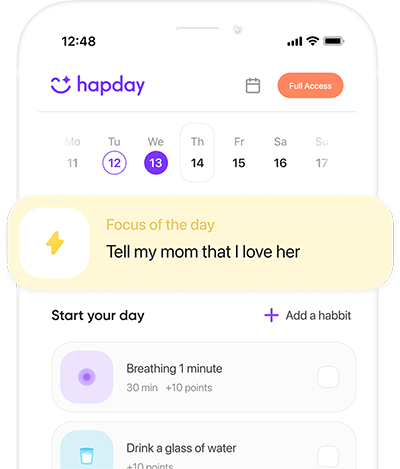When it comes to ADHD—something that touches about 5% of grown-ups worldwide—it often doesn’t just vanish after childhood. Nope, it usually likes to stick around. And for Gen Z and Millennial women, juggling ADHD with life’s never-ending busy-ness can sometimes feel like tackling a never-ending to-do list. Seriously, who doesn’t know that feeling? But here’s a thought, mindfulness might just be the ticket. It’s a nifty, science-backed way to boost focus and keep those ADHD tidbits in line. Dive in with me: let’s look at some mindfulness tricks that’ll help you steer your attention and keep it parked right where you want.
Table of Contents
- Understanding ADHD and Mindfulness
- Quick Focus Hack: Mindful Breathing
- Quick Focus Hack: Body Scan Meditation
- Quick Focus Hack: Single-Tasking
- Quick Focus Hack: Digital Mindfulness
- Quick Focus Hack: Mindful Listening
- Integrating Mindfulness into Daily Life
- The Science Behind Mindfulness and ADHD
- Conclusion
- References
Understanding ADHD and Mindfulness
What are we really dealing with when we talk about ADHD? Inattention, hyperactivity, impulsivity. For many, these are the usual suspects disrupting everyday life. Enter mindfulness: it’s about staying present and fully engaged in the moment. It’s not just talk—mindfulness can really tone down those ADHD symptoms by helping tweak your attention regulation skills. There’s this research from the Journal of Attention Disorders that laid it all out: mindfulness-based approaches can help decrease ADHD symptoms and bolster emotional control. Fascinating, right?
Quick Focus Hack: Mindful Breathing
Breathing, it’s like the secret sauce of mindfulness—so simple, yet incredibly effective. Mindful breathing, to be precise, involves zoning in on your breath to nail down your attention. Try this: breathe in through your nose for four counts, hold it there for four, then breathe out slowly through your mouth for six. Do this cycle for about five minutes. Not only could it amp up your concentration, but it might just blow away some of that stress, like a breeze through an open window.
Quick Focus Hack: Body Scan Meditation
Next up, body scan meditation. It’s a fancy term, sure, but what it really does is root you back into the here and now. Picture this: you mentally tip-toe from head to toe, noting any sensations. Don’t judge them; just let them be. This little exercise draws your attention away from every shiny distraction and locks it onto your physical self. According to what Psychiatry Research: Neuroimaging shared, this technique can even rev up the parts of your brain that handle attention and regulate emotions. Not bad, huh?
Quick Focus Hack: Single-Tasking
Ah, multitasking—ever the allure, especially in a hustle-centric world. But doing one thing at a time, single-tasking, for someone with ADHD? It might seem counterclockwise. Fun fact: multitasking often backfires, magnifying inattention and tanking productivity. The American Psychological Association had a say: hopping between tasks can drop productivity by 40%. Instead, try this hack—set a timer for 25 minutes, focus solely on one task, take a 5-minute breather, then dive back in. That’s the Pomodoro Technique for ya. Could it crank up your focus and efficiency? Only one way to find out.
Quick Focus Hack: Digital Mindfulness
In today’s screen-saturated era, digital distractions are everywhere. Digital mindfulness means putting fences around those screens—to keep them from luring you away from what’s important. Disable some notifications, track screen time with those handy apps, or simply set specific times to check emails and scroll. Get this right, and you might just build a more savvy relationship with your tech.
Quick Focus Hack: Mindful Listening
Listening, when done mindfully, is more than just hearing. It’s engaging fully and without judgment. Such a game-changer—it can not only finesse your communication skills but your focus too. While chatting, really, truly focus on the speaker. Catch their words, watch their movements. Resist the urge to prepare your reply mid-sentence. It’s about being in the moment, peeling back layers to better understand and connect.
Integrating Mindfulness into Daily Life
Bringing mindfulness into your day-to-day groove can be a kind of magic. Start with baby steps: five peaceful minutes of mindful breathing each morning. As comfort grows, stretch that time. Pepper in mindfulness moments into simple tasks—eating, walking, even dishwashing. In no time, it might just feel like second nature.
The Science Behind Mindfulness and ADHD
Why does mindfulness make a difference in managing ADHD? It’s all in the brain. Really, research has shown an uptick in gray matter density in regions affecting attention, memory, and sensory processing. According to the Clinical Psychology Review, mindfulness hones cognitive control, tamps down emotional outbursts, and boosts sustained attention. What more could one ask for?
Conclusion
At the end of the day, mindfulness presents itself as a very practical—and non-medical—toolbox for tackling ADHD symptoms. By blending in techniques like mindful breathing and digital mindfulness into your routine, you’ll likely see a lift in focus and general well-being. Remember, the key is sticking with it. Ready to take control and sharpen your focus? Why not start with the Hapday app—offering personalized mindfulness exercises tailored just for you!
References
- Zylowska, L., Smalley, S. L., & Schwartz, J. M. (2008). Mindfulness meditation training in adults and adolescents with ADHD: A feasibility study. Journal of Attention Disorders, 11(6), 737-746.
- Chambers, R., Lo, B. C. Y., & Allen, N. B. (2008). The impact of intensive mindfulness training on attentional control, cognitive style, and affect. Cognitive Therapy and Research, 32(3), 303-322.
- Zeidan, F., Johnson, S. K., Diamond, B. J., David, Z., & Goolkasian, P. (2010). Mindfulness meditation improves cognition: Evidence of brief mental training. Consciousness and Cognition, 19(2), 597-605.

